airplanes
Latest
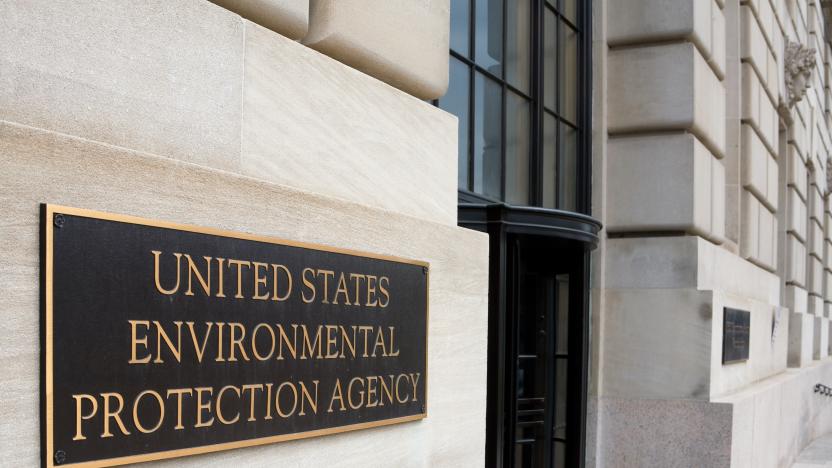
The EPA takes initial step towards regulating lead fuel used by small planes
The EPA has highlighted some of the environmental and public health risks associated with lead emissions. The agency wants to begin regulating the use of leaded fuel still often used in smaller airplanes.
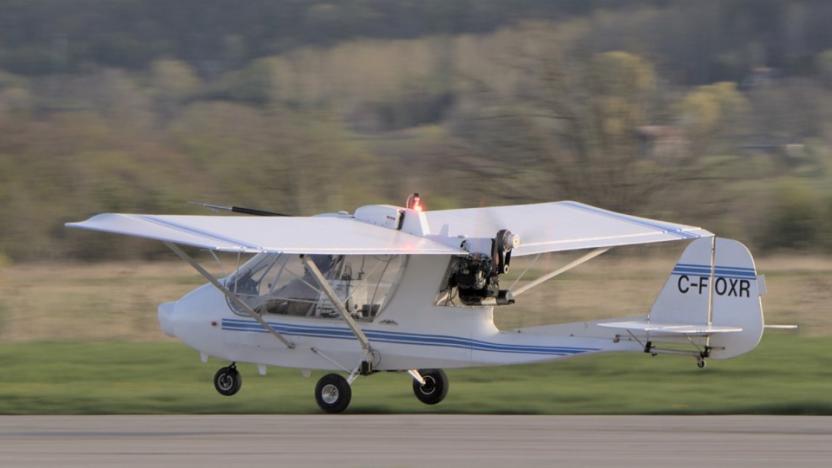
Startup will test self-flying aircraft in remote regions of Canada
A Canadian air cargo startup called Ribbit is planning to test pilotless flights for deliveries in remote areas of the country.
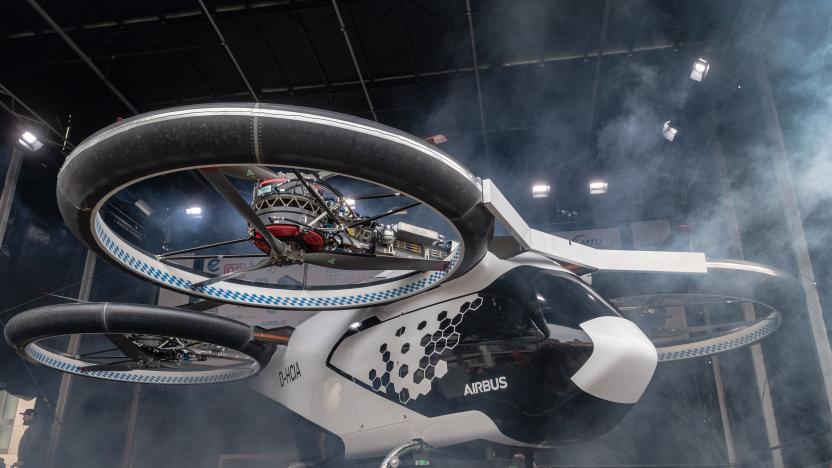
Luminar will bring its LiDAR tech to Airbus planes and helicopters
The companies hope to 'ultimately enable safe, autonomous flight.'

Cellphone interference still poses a risk aboard some Boeing jets
Even switching your phone to airplane mode won't keep it from being a risk on some Boeing jets. A 2014 FAA study revealed that some cockpit screens on Boeing 737 and 777 jets are vulnerable to interference from WiFi, cell phone signals or even weather radar. Bloomberg reported today that while many have been replaced, some jets still contain the outdated models built by Honeywell International, Inc.

ICYMI: Delivery drone inception and China's 'Spruce Goose'
try{document.getElementById("aol-cms-player-1").style.display="none";}catch(e){}Today on In Case You Missed It: Starship Technologies teams up with Mercedes-Benz to use the latter's Sprinter vans as "motherships" for the former's package delivery drones. China announced that it will buy the only existing Antonov An-225 airplane -- the largest and heaviest aircraft to ever fly -- and will finish construction on a second before using both to deliver construction equipment and aid in humanitarian relief efforts.
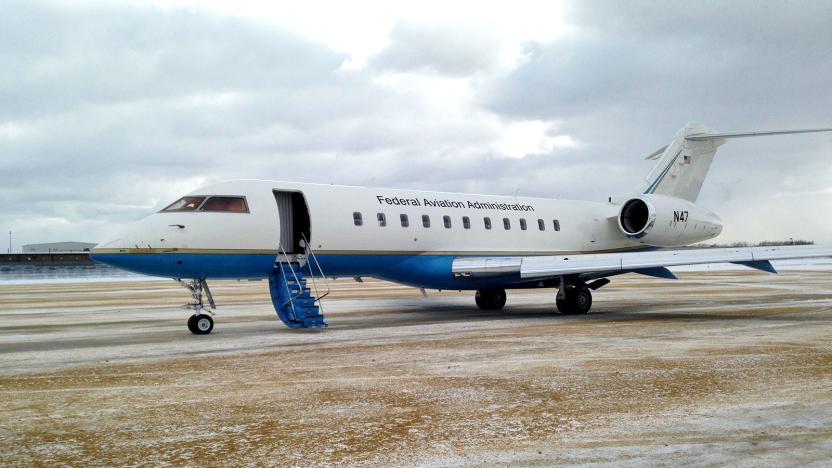
Taxiing airplanes could soon get flight info wirelessly
Airlines have made great efforts to update their tech, including replacing bulky flight manuals with iPads. But pilot teams still receive flight information updates the same way they've been doing for decades: over radio voice comms, as current wireless solutions don't support high-enough volume data transfer. Last February, a joint NASA and FAA team sent flight updates to a taxiing airplane over a wireless communication network for the first time, NASA said Tuesday.

UK pilot union wants laser pens classified as offensive weapons
Following an incident on Sunday in which a New York-bound Virgin Atlantic flight out of Heathrow had to be diverted when the first officer was blinded by a laser beam, the British Airline Pilots Association has called for the devices to be reclassified as offensive weapons. "This is not an isolated incident," British Airline Pilots Association's general secretary Jim McAuslan told BBC News. "Aircraft are attacked with lasers at an alarming rate and with lasers with ever-increasing strength."
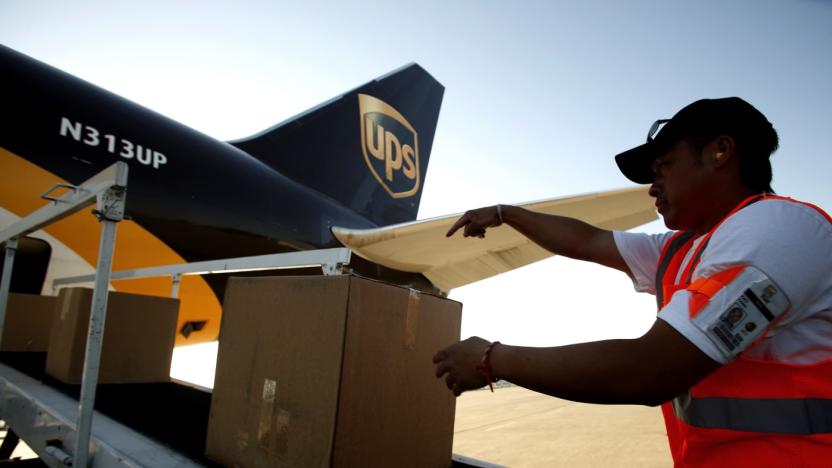
Amazon is reportedly leasing jets to power shipping network
Amazon-branded trailers aren't all the online retailer has planned to improve is shipping network. The Seattle Times reports that Jeff Bezos & Co. are in talks to lease a fleet of Boeing jets to handle the air cargo duties. As the company looks to avoid the headaches of using UPS and other carriers, it has already put a group of trailers on the road to carry loads to its distribution centers.

Gogo's next generation in-flight WiFi launches next year
Gogo's new 2Ku in-flight WiFi might not be as fast as your home internet connection, but it gets the job done -- and a lot faster than current in-flight connectivity. But how much will it cost? When will consumers get to use it? And of course, just how secure is the satellite internet service? For the answers to those questions and more, I sat down at a brief roundtable interview with CEO Michael Small and Vice President of Product Management Blane Boynton at the company's Chicago headquarters.

Loss of flight MH370 prompts UN satellite tracking agreement
Following the mysterious disappearance of Malaysia Airlines flight MH370 last year, the United Nations agreed to use global satellite tracking for passenger airliners. Under the terms of the deal, nations can use specific radio frequencies to monitor planes via satellite rather than solely relying on radar-driven technology on the ground. With a target of 2017, aircraft capable of sending Automatic Dependent Surveillance-Broadcast (ADS-B) signals to the ground will also communicate with satellites to track their movements. Shortly after the MH370 tragedy, Inmarsat offered airlines free satellite tracking for more accurate location info. With this week's agreement, the UN aims to keep an eye on the 70 percent of the world's surface than the ground-based systems can't cover. In theory, the use of satellite tracking would reduce the chance of another flight disappearing without a trace. [Image credit: Kevin Frayer/Getty Images]

We pushed the in-flight WiFi of the future to its limit
It shouldn't have worked, but I streamed an episode of Last Week Tonight, a Twitch broadcast of Fallout 4, the premiere episode of Aziz Ansari's Master of None and Meow the Jewels all at once, all on airplane WiFi. In-flight WiFi giant Gogo demoed its next-gen version of mile-high connectivity, 2Ku, above the overcast November skies of Gary, Indiana, bragging 98 percent coverage around the world (the poles don't play nicely with airborne internet) at peak speeds of 70 Mbps. The reality is transfers much slower than that on a plane with roughly 25 journalists, business folks and Gogo staff all doing the same as me: trying to break the internet for about an hour.

Northrop Grumman lands USAF deal for new long-range strike bomber
Defense Secretary Ash Carter and Air Force Secretary Deborah Lee James announced on Tuesday that the DoD has awarded Northrop Grumman the lead contract for the US military's upcoming Long-Range Strike Bomber (LRSB). The contract is valued $60 billion, making it the single largest airframe contract since Lockheed won the deal for the $400 billion F-35 Joint Strike Fighter over a decade ago. At that price, the 21 airframes on order are expected to cost roughly $564 million apiece (in FY2016 dollars).

FAA: Don't pack lithium batteries in your checked bag
If you've been packing extra lithium batteries in your checked bag before a flight, you might want to avoid doing so in the future. The FAA warns that storing those batteries in luggage that'll travel in the cargo hold can "present a risk of both igniting and fueling fires." The agency wants airlines to prohibit the practice and to remind travelers at check-in not to stow extras in a checked suitcase. Worried about running out of juice for that toothbrush or point-and-shoot camera? You might want to wait until you land to pick up more batteries. [Image credit: Scott Olson/Getty Images]

FAA tests tech to spot illegal drone operators near airports
As the number of privately-owned UAVs have exploded here in the US, so too have incidents of hobbyist drones being flown too closely to airports. More than 100 incidents have been reported every month this year, up from a handful of occurrences in 2015, according to FAA deputy administrator, Michael Whitaker. To combat this trend, the Federal Aviation Administration is looking into technology that zeros in on scofflaw drone pilots by tracking their radio signals.

Drone reports by airplane pilots nearly triple over 2014
The Federal Aviation Administration (FAA) may have loosened up its drone rules, but it'll come down hard on any pilots caught operating them near manned aircraft. The agency said that drone sightings by commercial and private pilots are up nearly triple so far this year from all of 2014, with 275 sightings in June and July alone. One of the more notorious incidents involved a drone operating over a forest fire, forcing water-bomber pilots to the ground. That in turn caused the fire to spread to a freeway, burning several vehicles.

Marine Corps finally declares the F-35B ready for combat
After years of testing and development, production setbacks and cost overruns and more than half a trillion dollars invested, the F-35B fighter jet has finally passed its biggest milestone to date: it's achieved initial operational capability (IOC) within the US Marine Corps. That means that the F-35B can now be deployed around the world and employed in active combat.

Amazon proposes a delivery drone flight plan
Following the FAA's recent relaxation of commercial drone flight regulations, Amazon is forging ahead with plans to employ the machines for deliveries. But first, the company has proposed some ground rules to keep the fledgling industry flying safely and out of the way of manned aircraft. Currently the FAA only allows drones to climb to 400 feet and they must remain within the pilot's line of sight. They also cannot be operated within five miles of an airport. Amazon's proposal builds off these initial restrictions with faster, long-range drones flying between 200 and 400 feet up. Slower and short-range drones would operate below 200 feet.

Virgin's new in-flight WiFi is strong enough to stream video
Virgin America has announced that it's teaming up with satellite internet company ViaSat to provide the fastest in-flight WiFi of any commercial carrier. The new system uses a hybrid Ku-/Ka-band receiver to deliver an internet pipeline eight to 10 times faster than anything else on the market. The Ka-band alone offers a whopping 140 gigabits-per-second throughput. It's being installed on the company's new fleet of A320 airliners and will be put into service on Hawaii-bound routes starting next year. That alone is a big accomplishment as the rest of the airline's fleet have to rely on ground-based WiFi connections, which don't work over the ocean's expanse. Virgin touts that this in-flight connection will be equivalent to an average home broadband link and users are expected to use it as such, streaming videos, watching the carrier's 18 channels of DishNetwork and surfing the internet with abandon -- just at 35,000 feet.

FBI surveillance planes flying over US cities linked to fake companies
Thanks to a report from The Associated Press, we now know more about the FBI's fleet of small surveillance planes that are flying over US cities. It's no secret the aircraft have been used for years to aid the bureau's efforts on the ground, but recent flights were equipped with cameras and cellphone-tracking technology. The FBI says mass surveillance isn't the purpose of the group of mostly Cessnas (like the one above), maintaining the gear is only used for ongoing investigations -- more often than not, without a warrant. The FBI isn't denying the existence of the aircraft, but the AP linked the fleet to at least 13 fake companies. Those companies coordinated over 100 flights in 11 states during a 30-day span starting in late April. According to the bureau, measures are taken for "operational security purposes" and for pilot safety. The FBI also says the phone-tracking tech is rarely used. However, as with its Stingray devices, the cellphones of nearby people are caught up in the net -- not just the intended target. [Image credit: AP Photo/Andrew Harnik]

NASA's shape-shifting plane wings pass initial flight tests
After six months and 22 flights at NASA's Armstrong Flight Research Center in Edwards, California, NASA has announced the successful completion of testing for its morphing airplane wing design. Known as Adaptive Compliant Trailing Edge (ACTE) flight control surfaces, they replace a plane's conventional, rigid flaps with a flexible composite material. Not only are they designed to significantly reduce an aircraft's weight (as well as the noise it generates during flight), these flaps could save the industry millions of dollars annually in fuel savings. In tests, the wing's curve remained set anywhere from -2 to 30 degrees but it can be adjusted as needed, even in midflight. Eventually, flexible wings can make for lighter, more fuel-efficient planes as well as quieter takeoffs and landings.







